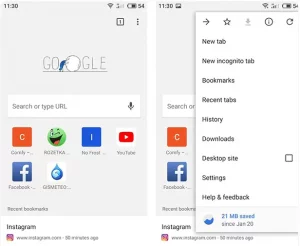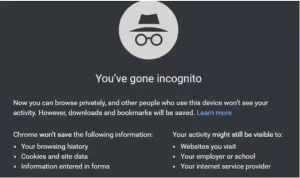The use of the internet in universities is not a new norm. Most learning institutions have made internet access for teachers, administrators, and students possible to make learning and school operations easy.
With the internet installed in a university, activities such as distance learning, record keeping, and professional development can now be performed efficiently.
Communication with parents and other university departments has been eased. A university with an internet connection that has a good bandwidth can achieve better results in examinations because strong internet enhances student learning.
Despite the myriad advantages of internet usage in schools, there are a number of drawbacks. It has become a challenge for learning institutions to protect students from unsuitable material.
The rise of commercial internet cafes has prompted most universities to introduce their own cafes inside the institution.
These cafes are meant to provide convenient internet access to students and the entire academic community of the university.
This is a move that benefits the bigger number of learners who cannot access the internet and computer at home because of the high cost.
If you are a student, you can access licensed online databases to download research files and prepare for your assignments.
Can my School See my Internet History on my Phone?
A school can see your internet history if you use institutional devices, computers, or their network. When you are using your phone while connected to the school internet, privacy is of utmost concern. As long as you log into your school account using the school internet, you can be tracked if necessary.

Your browsing history on your phone can be watched in certain circumstances.
For instance, if you have been assigned a Google-enabled account, it will be possible to access your browsing history and data on Google.
Schools do assign these accounts and give students a password and username.
Also, if you use your phone to connect your email account to Google services or Gmail, the history of all your Google searches or whatever Google can record will be reviewed by your school.
This is a clear indication that any browsing activity you perform on your phone can be traced by your administrators.
In addition, logging into your school account using your phone can be risky if you enable syncing. Your internet history will be accessed whether you are in school or at home.
Connecting of mobile phones to the school network makes it easy for school administrators to check what you are browsing using your phone.
Schools that are able to control student emails with passwords can not only access your internet history, but also your location and YouTube history.
What can your School See when you Use Internet?
When you use your school internet, there is a lot to worry about. Even though schools have put up security measures to protect the network, the safety of the information you send or receive is not guaranteed.
Students often wonder if they are being tracked, and if their privacy is being invaded. However, it is important to know that your school has a limit to what they can check.
It is obvious that if you are using your school Wi-Fi, you are being monitored by your school administration. As long as you have logged in, you can be monitored when in your classroom, outside school, or whenever you are online.
This has been made possible by the use of Wi-Fi trackers and biometric scanners that school administrations are using to know who you are, your location, and activities you are doing online.

Whenever you use your school internet using the phone or laptop, your university will know the websites you have visited.
To make it worse, they can check what you were searching for especially if you visit websites that are yet to be HTTPS secured.
Schools and other learning institutions are becoming wiser and more innovative in tracking your internet activities.
There are those who have incorporated classroom management software on students’ laptops in order to check their browsing history.
Nevertheless, all this is not done to violate a student’s privacy but to protect them from inappropriate internet material that is not necessary for their studies.
Apart from checking the sites you visit, your school can see your location through Wi-Fi usage. Most schools are able to track your movement around the school vicinity as long as you have connected the school Wi-Fi on your phone or laptop.
The tutor or school administrators can know the exact room a student is in. With technology advancing, a school can identify the specific activity you are doing at a particular time.
This helps to know the amount of time a student does not spend in school activities.
If you have installed Google maps, your location history can be accessed by your school teacher. This is even easier for a school that controls students’ emails by assigning specific usernames and passwords.
YouTube history is also not safe if you are using school Wi-Fi. The video searches you make and watch can be seen including the specific comments or likes you made.
Photos, documents, and files uploaded on social media can be accessed by your school. This is because schools can see your social media since whatever you post online is public.
Can Teachers see your Search History on Google?
If you use a device such as a mobile phone or laptop to access your school account, your school can track you browser activity remotely because they are the managers of the account.
Teachers can see your search history on Google or Bing if you used the school computers or network and you are under investigation. Through computers, it is possible for the school to find your history. The administration tutors can be able to view the website caches that have been visited by searching on Google.
In summary, if a student uses a school computer to log in as an administrator, all browsing histories can be tracked by the teachers.
Your search history on Google is not safe even if you delete it immediately after browsing. Both deleted and undeleted history can be seen by administrators.
How to Protect your Private Browsing Data
To minimize chances of being monitored when using the internet, private browsing provides a memorably appropriate response.

When you are online while using private browsing, you have more control over the collection and storage of your private information.
You can use browsers such as Firefox, Safari, Chrome and Explorer with all your internet activities shielded.
Nevertheless, private browsing does not guarantee automatic safety.
The possibility of your sensitive data such as financial details falling into bad hands cannot be overlooked.
There are individuals who have used private browsing but still their browsing history was recorded by proxy servers and firewalls.
Using a trustworthy proxy server is one of the reliable ways of protecting your private browsing data.To enhance the privacy on your data, the use of VPN can be a good alternative for keeping your browsing truly private.
A VPN functions as a protective barrier between the device you are using and the internet. Apart from hiding location and IP address, A VPN ensures that there is protection when visiting different websites through data encryption.
Even if you are browsing on public Wi-Fi such as school internet cafes, your private browsing data is safe from any kind of invasion.
It is obvious that if a student is going to use a school computer and internet, the administrators will be able to check most of the activities.
A student can take preventive measures such as checking the privacy practices of the school to avoid his private information being scrutinized. Also, you can opt to use email providers that have reliable privacy and security protection.
Check out our post on whether teachers can search your phone and why such may happen while at school.
To learn more about it, watch this video.


I am an educator with vast experience in learning and pedagogy. Currently, I write to help people discover creative and insightful ways to make learning simpler. When not working, I love playing soccer.
